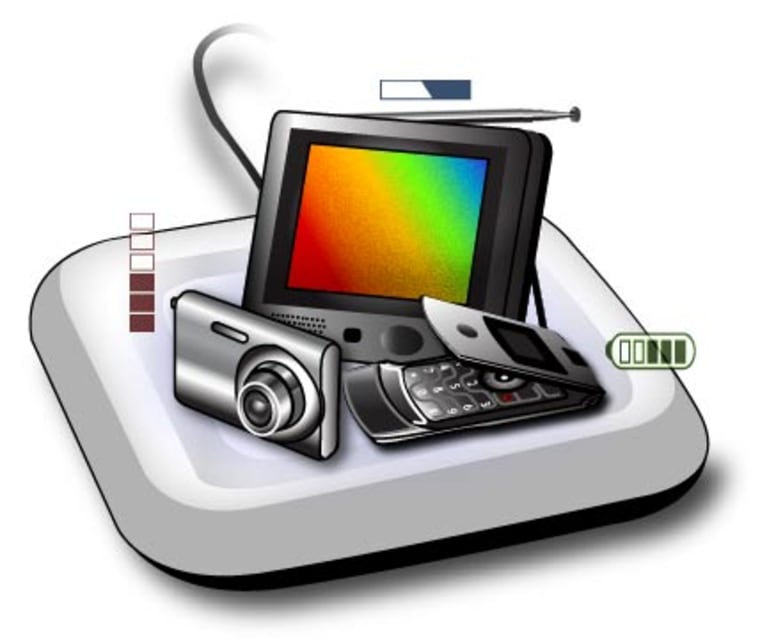Wouldn’t a wireless world be a wonderful thing? The light seems to be shining at the end of the tunnel. We’ve already got cord-free with our phones, remote controls, video game controls and numerous other devices.
So what’s with the wires that continue to mire the backs of our TVs, VCRs, stereos and the other things that have become essential parts of our entertainment centers?
Those, unfortunately, might not be going away anytime soon. Power still needs to flow through those cables to connect to an electrical power source, anywhere between 100 and 240 volts.
But mobile phones might lead the charge out of our wire-mired world. MIT researchers are working on a process called "evanescent coupling" that traps electromagnetic energy in a re-charger and, in turn, activates similar devices with the same "resonant frequency."
In layperson terms, this means you could walk in the door to your house or apartment, throw your mobile phone, digital camera and MP3 player down anywhere — or keep it in your bag — and pow, they start recharging. The key to this connection is that the electromagnetic waves on one re-charger located somewhere in the house tune into the same resonance as those devices. Normally, they’d disperse all over the place, which is why they usually need to be in close contact to charge.
Capitalizing on that idea, Splashpower came out with a commercial product this year — prototyped in 2005 — called a SplashPad that uses one re-charging device for a variety of mobile products.
What the MIT researchers want to do is to take that a step further by allowing the electromagnetic waves to be effective even if they aren't in close interaction. The re-charger — a power transmitter — would create a “non-radiative” electromagnetic field that would send out energy to specific devices programmed with similar resonances.
The three MIT colleagues credited with the idea are Marin Soljacic, Aristeidis Karalis (a graduate student) and John Joannopoulos (a professor), and they're currently in the beginning stages of conceptualizing a prototype of a device that would harness that ever-important energy, energy that would normally go to waste.
The technology they’re developing would zero in on compatible resonances and exude an electrical current. Power between the two currents would then “resonate” to amp up to provide the energy necessary to juice up the device(s) through induction.
Solajacic presented the idea at the American Institute of Physics Industrial Physics Forum in San Francisco in November and at the MIT news web site, it explained, “Scientists and engineers have known for nearly two centuries that transferring electric power does not require wires to be in physical contact.”
Really? Two centuries? What took so long to make this leap?
Scientists will haggle over the whys, but in some ways, it’s elementary. Although the physics of electromagnetic fields have been known for 200 years, the application of those ideas haven’t really become obvious until recently with the ubiquity of mobile devices — a point made on the online forum of the American Institute of Physics Industrial Physics Forum.
The article posted on MIT’s web site goes on, “Electric motors and power transformers contain coils that transmit energy to each other by the phenomenon of electromagnetic induction. A current running in an emitting coil induces another current in a receiving coil; the two coils are in close proximity, but they do not touch.”
So someday, wires may not come with laptops, mobile phones, vacuum cleaners, robots (like vacuum cleaners or R2D2’s cousins), things like that. And that clutter free world is one we can’t wait to see. For now, the biggies still need connection to power outlets, but the idea is for one recharging pad to create enough power for an entire household’s worth of devices.
For now, enjoy the Wi-Fi's you’ve got. It’s only going to get better.
